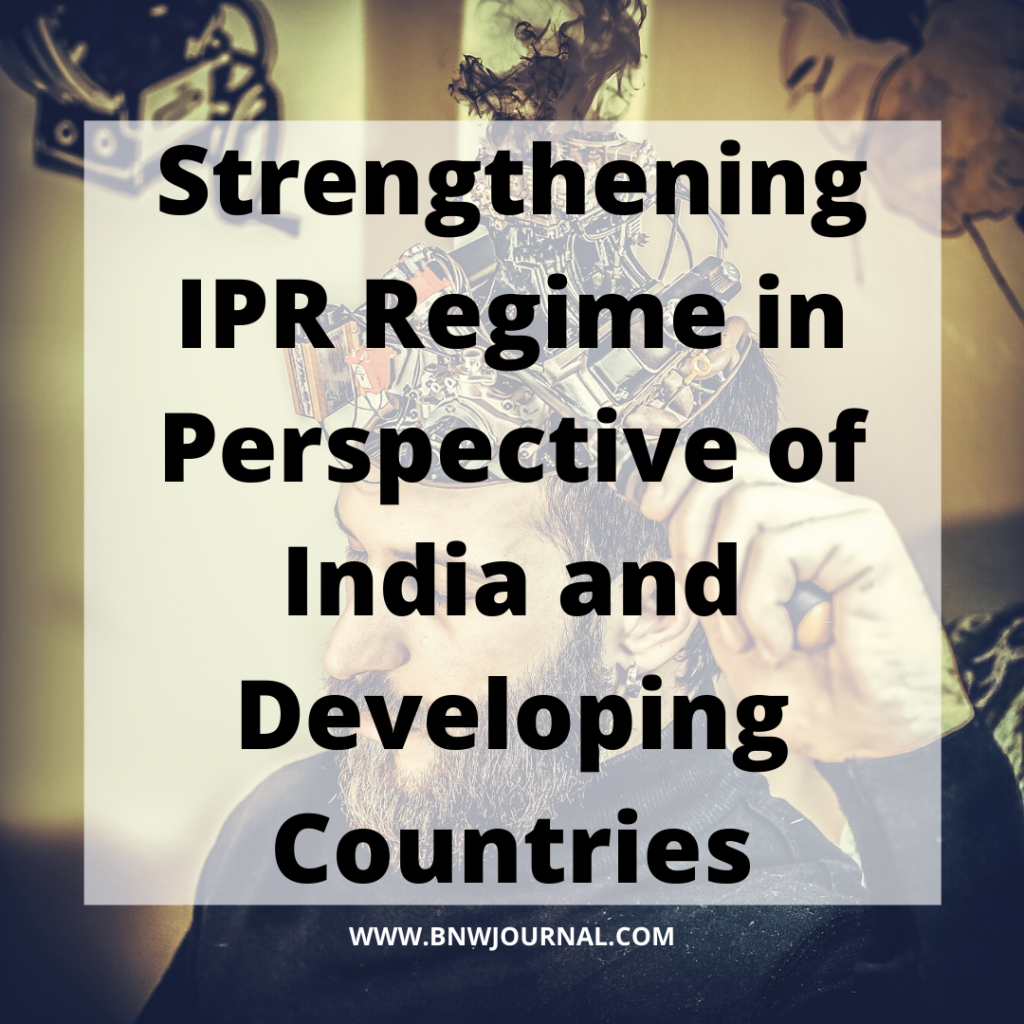![]()
The Intellectual Property regime at the global level is being subject to a considerable amount of expansion. And is being modernized, mainly due to the implementation of the Agreement on Trade-Related Aspects of Intellectual Property Rights (TRIPS). The TRIPS agreement has provided for the protection of Intellectual Property Rights. It has promoted investments in all kinds of regulatory agencies for the enforcement of these rights. And consistent implementation of new policies for protection across international borders. However, one of the main issues to be address is whether such implementation of policies would positively impact the developing nations.

INTRODUCTION
There has been a complex relationship existing between Intellectual Property and the growth of the economy. The development of Intellectual Property Rights depends on the growth and circumstances that are particular to each country. If developing countries ensure that their intellectual property functions within a broad set of policies and regulations, the regime would ultimately lead to growth in the long run.
INTELLECTUAL PROPERTY ENFORCEMENT IN INDIA WITH COMPARATIVE PERSPECTIVE FROM OTHER COUNTRIES
Today’s world is very competitive and is dynamic; Intellectual Property has remained and developed as a key ingredient for most of the emerging startups by giving them a competitive advantage to emerge in a marketplace. A very booming and prosperous patent portfolio helps to bring in more investors and would help to wade and deterring would-be competitors, and will force the competitors to adopt a different mechanism. As an added point, Intellectual Property also contributes to future finances and helps in generating revenue from the licensing.
There is a large amount of brand value involved with the company and its Intellectual Property. It gives a platform for investors, clients, and the stakeholders. It involves to exercise a tremendous amount of confidence in the country.
The major problem that any company faces in investing in IP in India is the poor and weak IP enforcement. There is an involvement of a lengthy judicial process. There is almost always a delay in the processing of applications. On average, it always takes about 6-7 years for a company to receive a grant of any rights relating to Intellectual Property.
Europe
The European Community with regards to Intellectual Property Rights favors the maximum degree of harmonization. Hence there is a provision entailing the harmonizing of various trademark and copyright laws. However there are some drawbacks to harmonization. The first being, that harmonization provisions entail are subject to being overridden. It needs to be prove that they directly lead to affecting the establishment and the functioning of the European Community’s market. Also, the member countries of the European Union are unwilling to give all their powers to a common legislature.
US
In the United States and Japan, the benefits of an Intellectual Property system is that they very well recognize the benefits of developing such a system to improve their modern industrial economy. Both the systems welcome change and are constantly changing.
India
In India, to combat the weak Intellectual Property Rights enforcement; the government has come up with a large number of initiatives. The concept of patent protection has attract a flurry of attention. There was an announcement of the Indian Government Startup plan of action. It has been often regard as the IPR role. To encourage the concept of new startups, new rules have been set up to accelerate innovations including the appointment of a legal counsel, patent and IPR funding, and the introduction of reduction in the patent fees. Indian government has also brought up new initiatives to build up bilateral co-operation with different countries to improve the efficiency of the Indian Patent and Intellectual Property Rights offices.
That said, a startup’s negligence in securing an invention could end up in them paying a lot more than they can think of and would serve as an expensive lesson. For example, Xerox PARC did the mistake of not ensuring a patent for their computer mouse and their interface and so companies like Apple Computer built their technology using Xerox’s interfaces without paying to Xerox.
CONCLUSION
Any innovation or invention of a person has a value only if it can be protect and safeguarded lawfully. Only then will companies be willing to invest their intellectually protected properties and establish manufacturing.



0 Comments